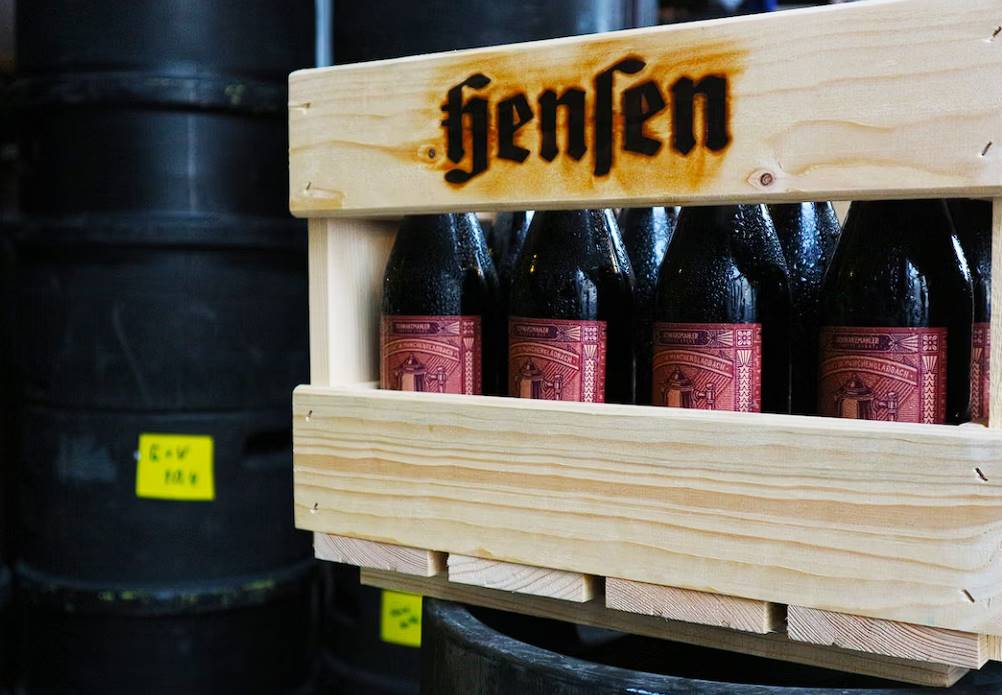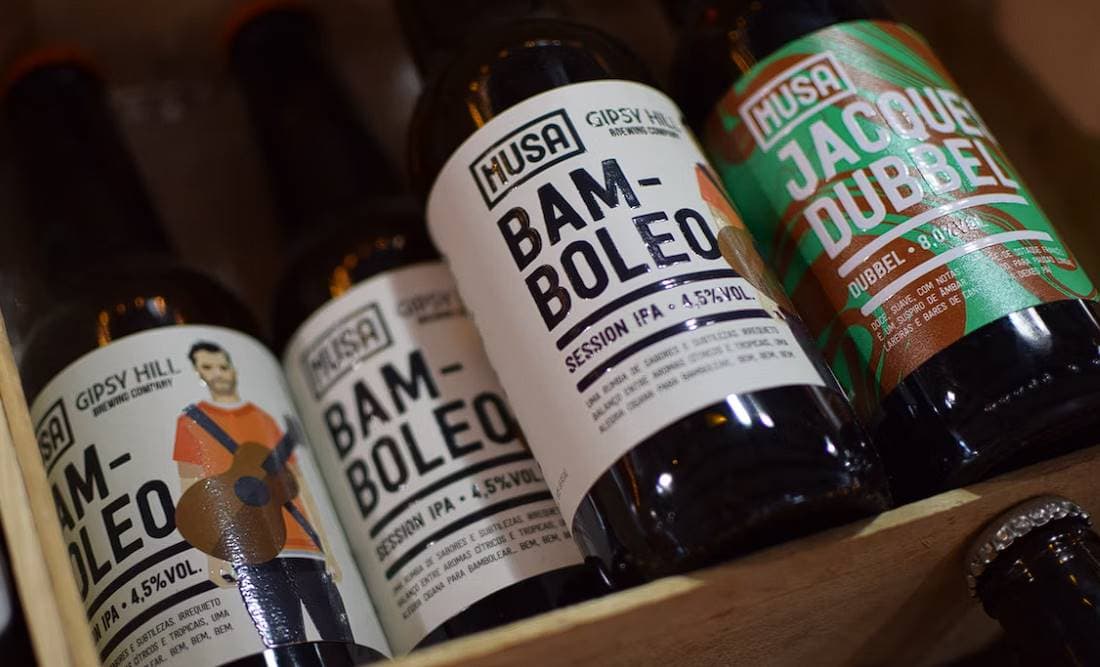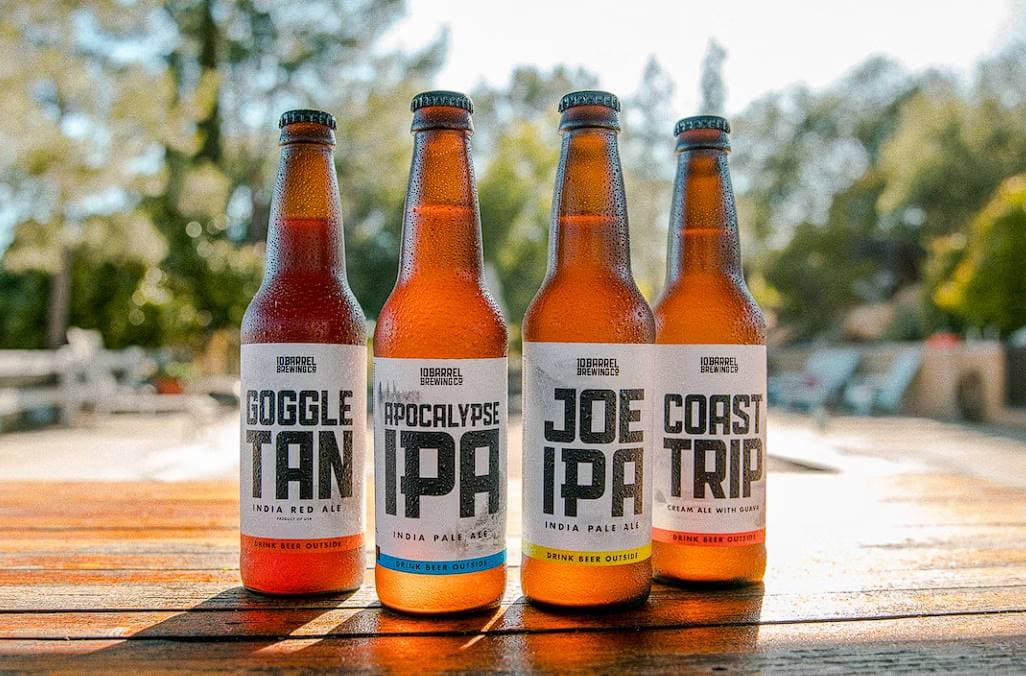The higher standards of the well-informed beer consumer now define beer quality. Modern beer drinkers are discerning gourmets who are easily offended by inferior flavours. As a result, flavour inconsistency has become one of the brewing industry's top quality concerns. Are you looking for a Melbourne brewery or distillery that is affordable and professional? Look no further than Tar Barrel in Mornington, Victoria. We are experts in the brewing and distilling industry, and we can help you create the perfect drink for your customers.
Given the large diversity of beer variations and styles that are generally well-received by drinkers, it can be challenging to achieve beer quality in terms of flavour and stability. Therefore, brewers need to learn the mechanisms that lead to flavour variations in beer over time, as well as the quality control methods and quality assurance approaches that can aid them in pursuing higher quality and more consistent beer.
Beer Packaging and the Importance of Oxygen
Most taste stability issues can be avoided by keeping the dissolved oxygen content in bottled beer around 50ug/L. Quality control criteria for packaged oxygen can be set at 0.2 mg/L or below, with current filling equipment capable of achieving 0.1 mg/L total package oxygen. However, this may only be possible in some packing plants. Many people attribute the development of the complex flavours that are typical of aged beer to the presence of reactive oxygen species (ROS).6,7. Both radical (nitrogen and oxygen) and non-radical (able to convert to oxidising radicals) reactive oxygen species exist. A good quality assurance practice for the modern brewer is measuring the total package oxygen in the finished product. Flavour decline is not always proportional to molecular oxygen concentrations. It has been hypothesised that transition metal-catalysed free radical production involves oxygen-related processes.
Beer Loses Flavour When Exposed to Light
Beer, which is alcoholic, is a popular drink among millions of people all over the globe. However, you may need to know that beer is sensitive to light and UV rays. Too much time in the sun causes beer to become "lightstruck." The UV light causes a chemical interaction between the hops' alpha acids and the beer's sulphur, resulting in chemicals reminiscent of skunking spray. As a result, you get skunked beer, so named because it has a skunky aroma and flavour. Beer stored in clear bottles is particularly susceptible to this reaction when exposed to fluorescent illumination. As a result, stores selling beer should keep bottles out of direct sunlight and artificial lighting if at all possible.
Differences Between Cans and Bottles
Even though many beer enthusiasts still prefer bottles, most craft breweries have shifted to selling their products exclusively in cans. Currently, aluminium cans are used for packaging over 30 per cent of all pre-packaged craft beers. Beer from a can have a better chance of lasting longer than bottled beer once opened. That's because, compared to bottles, beer cans are better at preventing light, pollutants, and oxygen from spoiling the beer within. Brown glass bottles are preferable to clear or green ones if you don't like drinking your beer from cans since they block UV light and keep your beer from getting skunky. In addition, keeping beer in brown glass bottles keeps it fresh for longer.
Beer in a Can Taste Like Metal? Fact or Myth?
Many beer drinkers are resistant to buying beer in cans because they believe the beer would taste metallic.
Beer in an aluminium can is protected from the metal outside by a polymer lining, so it doesn't get a metallic flavour. Lining cans is also familiar; it has been common among manufacturers since at least the 1930s.
Scientists typically state that 80% of flavour is from your sense of smell. Therefore, the metallic taste many associates with cans is the smell of the can as you lift it to your mouth. However, if you pour the beer from the can into a clean glass, you won't be able to tell the difference between the canned beer and the bottled beer.
Even though many modern draught beers are kept in metal kegs, you rarely hear anyone complaining that their beer has a metallic flavour after being poured. Many of us even carry drinking water in metal flasks when we're out and about, and you rarely hear someone expressing displeasure with the taste of metallic water.
It's more likely to be the beer itself than the can itself if you find that it has a metallic flavour. Low-quality grain and other ingredients used in beer production can sometimes impart a metallic flavour, especially if they have come into contact with metal during storage.
Beer with a metallic aftertaste may have been brewed with water high in iron or other heavy metals. Last, the tin or copper plated in nickel used to make the brewing equipment might rust over time and pollute the beer.
Canned beer Keeps Fresher for a Longer Period
Beer in a can is better protected from UV light and oxygen, two of its main enemies.
Beer stored in green or clear glass bottles on a sunny summer day will develop a "skunky" flavour due to exposure to light.
Beers that smell or taste off are said to be "lightstruck," this happens when UV light strikes specific molecules in the beer. Beer in a pint glass, enjoyed on a patio or sunny terrace, still has that skunky taste.
Brown glass filters roughly 99% of UV rays, which is excellent news for bottles, but it still isn't as effective as an opaque can, which lets no light in. Nevertheless, you may use it as a keg for all your favourite speciality brews at home.
Beer's flavour can also change over time due to exposure to oxygen. Beer cans and bottles have seals that will keep the beer fresh for their shelf lives but can provide slightly superior protection against oxidation.
Even though most modern crown caps for beer bottles are lined with silicone to make the seal more airtight and shield the beer from oxygen before being crimped to the bottle, some oxygen may still seep in over time. Therefore, when comparing the oxygen-free seal of a can of beer to that of a crown cap, you'll find that the latter is superior.
You shouldn't have any problems with the beer providing it is used up within a few months of being filled. In contrast, the double-seal beer cans offer to keep out air and help maintain the beer's freshness and flavour. Beers in bottles must deal with oxygen contamination avoided by the hermetic seal formed by an aluminium can.
Which Is More Sustainable and Kind to the Environment?
Beer cans are more regularly recycled than beer bottles because of the greater availability of recycling facilities for aluminium cans. Since it is lighter and less dense than other metals, aluminium is the most recyclable material on Earth. Aluminium production peaked in the late 19th century, and about 75% of that metal is still used today.
Switching to canned beer could be a great start if you care about the planet and want to help.
Shelf-Life Factors for Beer
Storage
The rate at which beer spoils is also affected by how the bottles are stored. Beer should be stored in an upright position to preserve its freshness. This reduces the amount of beer's surface area that is in contact with the air inside the bottle. It also prevents the yeast and sediment from floating around the beer and keeps them where they belong, at the bottom of the bottle.
Popularity
Have a lot of people shown interest in the beer you want to buy? Intensely popular imperial stouts don't stick around for very long. Therefore, unlike other beers on the shelves for extended periods, they are more likely to be fresh when you buy them.
Temperature
Beer should be kept between 50 and 55 degrees Fahrenheit. Beer's flavour changes due to oxidation and degrades faster at higher temperatures. Therefore, beer may be kept Fresher for a longer period if refrigerated.
Distance
Beers brewed and sold locally are more likely to taste good than beers shipped in from far away. The longer a beer has been in transit, the more likely it has been warmed, stirred, and oxidised.
Indicators That Your Beer Is Spoiled
In case your beer has gone bad, keep an eye out for these six telltale signs:
There's a Skunky Odour in the Beer
If you've ever been close to a skunk, you know it's not a pleasant aroma. This is a classic telltale sign of a beer that has gone bad. It's the original meaning of "skunked beer," commonly used by beer drinkers to describe an unpleasant brew. Light triggers a chemical reaction in beer, releasing sulphur compounds from bitter hops, resulting in skunked beer.
It's a Stale Beer Taste
Beer should not have been exposed to oxygen before being poured from a sealed bottle. Beer stored in a bottle or can and exposed to oxygen beforehand can develop an unpleasant cardboard flavour.
Has A Popcorn Flavour
Overexposure to diacetyl, a chemical produced by fermentation when beer matures, causes the popcorn flavour characteristic of stale beer. It has a buttery taste and, in large doses, can harm the lungs.
Tastes Terrible
Many varieties of beer have peculiar flavours, but it's typically easy to identify if those flavours were deliberate or not. For example, it might have the flavour of sulphur, sewage, or rotting cabbage.
It Reeks like and Tastes Like Gastric Acid Beer
Have you ever entered your usual watering hole to order a beer, only to be hit with a noxious odour? Or, you take a drink that tastes horrible, just like the vomit that builds up on the back of your throat when food comes back up the wrong way? The beer was probably stored in a contaminated container. However, the breweries' bottles, cans, or draughts could be to blame.
Has a Grassy/Green Apple Flavour to It
Your beer has a lot of acetaldehyde if it tastes like this. While trace amounts of acetaldehyde are normal in most beer styles, excessively large concentrations indicate that fermentation was stopped too soon. In the worst-case scenario, the beer may have an aroma reminiscent of an immature apple orchard.
Tips for Keeping Beer for a Long Time
Craft brewers put forth a lot of time and effort to create beers with exceptional flavour. They put them in bottles and ship them out so customers can buy and consume them quickly. It would be best to drink beer for the finest flavour while it's still cold.
Proper storage is essential if you need to preserve it for a while. If you want your beer to last as long as possible, follow these three guidelines:
Maintain the Preferred Temperature
Most beers taste best when stored between 50 and 55 degrees Fahrenheit. In addition, beer should be kept at a temperature that allows slow oxidation without damaging the delicate flavours. Since beer spoils quickly when stored below 50 degrees Fahrenheit, a smaller refrigerator designed for beer storage may be worth the investment.
Keep out of light or in a dark place
Light, like heat, hastens beer's deterioration with age. Because of this, beer should be kept in a dark place or with very little light.
Rule of Storage: Always Vertical
Beer ages more slowly because it is exposed to less oxygen when bottles are stored vertically.
Conclusion
The packaging of a beer can have a significant effect on the beer's freshness and quality. To achieve their goals of producing beer of ever-increasing quality and consistency, brewers must first get an understanding of the factors that contribute to beer's characteristic flavour changing over time.
Beer should have a total package oxygen measurement of less than 50ug/L and a dissolved oxygen measurement of less than 50ug/L. alcohol goes bad quickly when exposed to strong light, thus it's best if bottle shops don't leave their alcohol out in the open. Many small breweries only sell their beer in cans because they protect the beverage better from light, pollution, and oxygen.
Brown glass bottles are best because they protect the beer from ultraviolet light and last longer than clear or green bottles. Many beer enthusiasts avoid purchasing canned beer out of fear that it would have a metallic flavour, but in reality, the beer is more likely to be the culprit than the can. Tin or copper plated in nickel used to manufacture the brewing equipment may rust over time and taint the beer, and low-quality grain and other ingredients used in beer manufacturing may give a metallic flavour. Beer in a can is safer from its two major enemies, oxygen and ultraviolet radiation. Even if brown glass blocks 99% of the sun's ultraviolet rays, it is still no match for an impenetrable container.
Because aluminium cans are easier to recycle than beer bottles, they are more commonly recycled. The 19th century was the zenith of aluminium production, and 75 percent of that metal is still in use today. Keeping beer upright is the best way to keep it fresh. The key points of this article are the six indicators of stale beer. Skunky stench, stale beer flavour, popcorn flavour, horrible taste, nasty odour, and noxious odour are all examples.
Several aspects, including its popularity, temperature, distance, and distance, contribute to the beer's overall quality. Beer that has gone sour should be stored between 50 and 55 degrees Fahrenheit in the fridge. Beer that has gone sour should be stored between 50 and 55 degrees Fahrenheit in the fridge. Beer that has gone sour should be stored between 50 and 55 degrees Fahrenheit in the fridge. The three rules for long-term beer storage are the most crucial information in this article.
Guidelines include keeping the temperature between 50 and 55 degrees Fahrenheit, storing in a dark, vertical position, and avoiding light. Beer is best preserved when stored in a cool, dark place and upright bottles expose less beer to oxygen, extending their shelf life.
Content Summary
- Flavour inconsistency is a top-quality concern in the brewing industry.
- Brewers need to understand the mechanisms behind flavour variations in beer over time.
- Maintaining low dissolved oxygen content is crucial for taste stability in bottled beer.
- UV light exposure can cause beer to become "lightstruck" and develop a skunky flavour.
- Canned beer provides better protection against light, pollutants, and oxygen compared to bottles.
- Beer in an aluminium can does not taste metallic due to the polymer lining.
- The metallic taste associated with cans is often the smell of the can, not the beer itself.
- Canned beer can last longer and remain fresher due to superior protection against light and oxygen.
- Aluminium cans are more regularly recycled than beer bottles, making them more sustainable.
- Storing beer upright reduces contact with air and keeps sediment at the bottom.
- Popular beers are more likely to be fresh compared to those on the shelves for an extended period.
- Beer should be stored between 50 and 55 degrees Fahrenheit to maintain freshness.
- Local beers tend to taste better than those shipped from afar.
- Skunky odour is a sign of spoiled beer due to a chemical reaction triggered by light.
- Stale beer can develop an unpleasant cardboard flavour when exposed to oxygen.
- Diacetyl overexposure causes a popcorn flavour in stale beer.
- Terrible taste, sulfur, sewage, or rotting cabbage flavours indicate spoiled beer.
- Noxious odours or vomit-like taste may indicate contamination from the container.
- A grassy or green apple flavour suggests excessive acetaldehyde in the beer.
- Proper storage is crucial for preserving the flavour of craft beers.
- Maintaining the preferred temperature of 50-55 degrees Fahrenheit is essential for beer storage.
- Beer should be kept away from light and stored in a dark place.
- Storing bottles vertically reduces oxidation and slows beer aging.
- Upright storage exposes beer to less oxygen.
- The dissolved oxygen content should be low for taste stability in bottled beer.
- UV light exposure can cause the beer to develop a skunky flavour.
- Aluminium cans provide better protection against light and oxygen compared to bottles.
- The metallic taste associated with cans is often due to the can's smell, not the beer itself.
- Canned beer can last longer and remain fresher due to superior protection against light and oxygen.
- Aluminium cans are more regularly recycled than beer bottles, making them more environmentally friendly.
Frequently Asked Questions
Craft beers or specialty beers often require special attention to packaging. The choice of packaging materials and design may be tailored to enhance the beer's unique qualities, such as using specific bottle shapes, cork closures, or wax seals for certain styles.
Store beer in a cool, dark place with a stable temperature to minimise flavour degradation. Avoid exposure to sunlight, heat, and temperature fluctuations. Refrigeration is recommended for beers that require cold storage, while others can be stored at room temperature.
Beer cans offer several advantages, including excellent light and oxygen barrier properties, preventing beer degradation. They are also lightweight, easily recyclable, and portable, making them convenient for outdoor activities.
When properly lined, beer cans have a minimal effect on the taste of the beer. The lining prevents direct contact between the beer and the aluminium, preserving the flavour and quality.
Yes, most beer packaging can be recycled. Glass bottles, aluminium cans, and kegs are recyclable materials. However, it is important to check local recycling guidelines and ensure proper disposal to minimise environmental impact.


